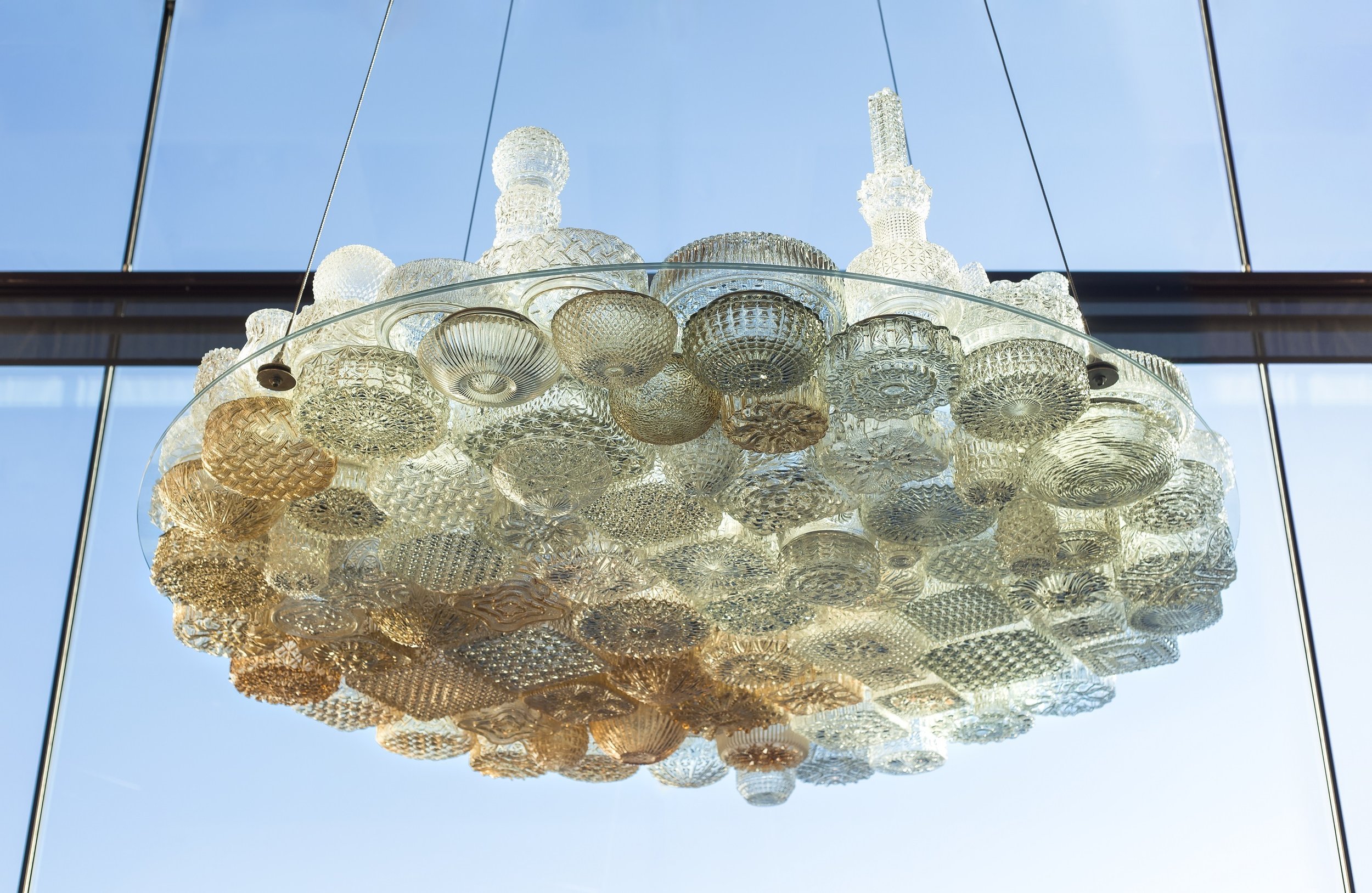Profile
Manufacturing in the very heart and industrial centre of Sweden.
From the start BLOND focused on illuminating the contract market and to have a close cooperation with our clients, whom are mainly architects, interior designers and lighting designers.
Established in the city of Värnamo, Sweden, BLOND is to this very day a manufacturing company that is staying true to the core values of high quality, great design and flexibility amongst customers.
The Scandinavian Design Legacy.
Together with some of the leading architects and designers of Scandinavia, we´ve set out to create a new standard of lighting.
BLOND luminaires are manufactured in series, but our products stand opposed to fully automated processing:
Expert handcraftmanship, in combination with modern production methods, are involved in each product leaving our facility.
By carrying out the manufacturing process under our own roof we don´t contribute to pollution in form of transportation as well as we can keep a high quality of our products.
Today, we are the proud producers of products that help lighting professionals create space through light.
Responsibility when developing luminaires.
Without the understanding of the artificial light, and the impact it will have when developing luminaires, it is impossible to take responsibility as a manufacturer.
We strive to produce luminaries that offers the possibility of creating a person-oriented lighting, enabling more of a holistic lighting.
Below are a few keywords that we identify each time when creating a new experience of light.
Identifying these keywords for each new product, is imperative in order to create better architecture and life, through light:
Principles of lighting.
Basic Principle: Direct light distribution
The direct light distribution is used to describe a space by using a focused light.
The light has a clear direction and defines the space – by the means of a ceiling mounted luminaire, a suspended luminaire or a spotlight.
The direct light distribution focuses.
Basic Principle: Indirect light distribution
The indirect light distribution is highly beneficial in some spaces, a means of relieving the stress of the eye.
The indirect light erases gradients, thus being a necessive way of completing some spaces of light.
Basic Principle: Atmospheric light distribution
The atmospheric light is not measurable, nor is it functional in the traditional sense.
It does not provide a light that can be studied in a text book, but rather speaks to our humanity.
It is easily forgotten, but nevertheless important when creating a space of wellbeing.
It is the most basic and fundamental of all lighting principles, one that has been with us since the discovery of fire.
It reminds us of being human.
Holistic lighting.
Experienced well being: Through amount of light.
Each individual is different, thus the requirement of light differs from individual to individual.
The most common difference is that between the ages: A young eye does normally not require the amount of light that is required by an experienced one.
The amount of delivered light output by a luminaire, in combination with the actual light distribution, will determine the well being of the individual.
Experienced well being: The possibility of determining the amount of light.
Each lighting situation is unique, be it the due to the individual, the task at hand or the actual light that is entered through a window.
Therefore, it is imperative that we produce luminaires that offers the possibility of adjusting the light output.
Be it an external dimmer, or an integrated one in the luminaire, it allows the individual to adjust the experienced light.
Experienced well being: By preventing glare.
When developing luminaires it is necessary to prevent uncomfortable, or even blinding, glare.
Glare can occur if the actual light source itself is not shielded properly, or if there are surfaces that reflect the light in a negative way.
Properly concealing and positioning the light source is imperative when creating a new luminaire.
Experienced well being: The colour reproduction of the light source.
Regardless of the environment that a luminaire is applied, and what task the lighting is set to solve, it is important to choose a light source that reproduces the surrounding colours in an accurate and natural way.
Experienced well being: Choosing the right colour temperature, for the right environment.
When determining the right colour temperature to be used, one can many times rely on some fundamental and well tested facts:
When creating a more atmospheric and ambient lighting, a warmer light is often preferred.
A cooler light instead is often preferred where visibility and higher performance is required.
The colour temperature affects our state of mind, and can increase our efficiency or calm our senses.
Many modern light sources today has the possibility of mimicking natural daylight, allowing the artificial light to change over the course of the day.
Experienced well being: Preserving our natural resources by energy efficient light sources and long term products.
Often being one of the largest energy consumptions in a building, it is a necessity as a manufacturer to work with energy efficient light sources and manufacturing luminaires where a high light output is achieved.
The energy efficiency of an LED luminaire cannot be defined by light output itself, the efficiency is instead defined as the ratio of the total measured luminous flux to the radiant flux including ballast.
In addition to working with highly efficient light sources it is also imperative to consider the actual lifespan of the product.
The lifespan needs to be addressed in order to evaluate the luminaires environmental impact and cost efficiency.
It is our hope as a manufacturing company that our products will achieve a long lifespan by being loved by its user, possibly even being passed on through generations.
With the goal to facilitate the creation of beautiful spaces by lighting design through an holistic approach, we exist to evoke meaningful responses that improve the wellbeing of every individual.
Enabling them to work, live and focus in a more sensible way through the combination of design and technology.





